Knock Out Roses: What Are They Good For? Not Your Garden!
By Linda Lee
The Knock Out Rose can be found in parking lots, along highway median strips and is highly regarded as a “landscape plant.” That’s another way of saying “seen at a distance.” Do not listen to the guy at the nursery who leads you over to the tubs of Knock Out roses and tries to sell you one.
Who does he think you are, the highway department?
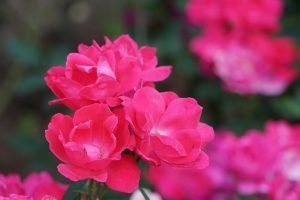
Introduced (and patented) in 2000 by a Wisconsin rose breeder, the Knock Out rose is marketed as a beginners’ rose bush that doesn’t grow too big, doesn’t need dead heading, is tolerant of harsh conditions and doesn’t need fancy pruning.
It blooms all summer. What could possibly be wrong with that?
Nothing, if you don’t care that it has vicious thorns, no scent, isn’t particularly pretty and is as common as the Stella d’Oro day lily – which is most likely planted nearby in the supermarket parking lot.
Another thing? Not even bees like it. Because it is hybridized, the Knock Out rose isn’t particularly laden with pollen and, remember, it doesn’t have any scent.
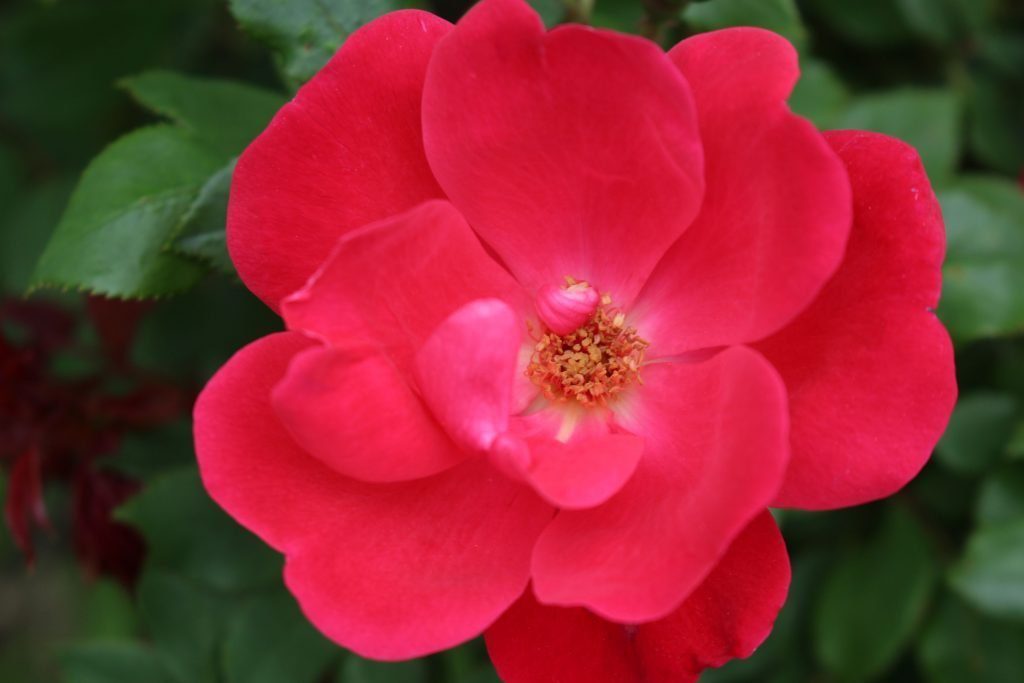
The grandpappy of the Knockout rose comes from Europe. There it is known as the Dog rose. That tells you something, right?
The Dog rose climbs over hedges, has five petals, mean thorns and, again, no scent.
In the mid-1800s a multiflora rose from Asia with small white flowers was introduced to the US as a fantastic solution to soil erosion, and a “living fence” to control livestock. The multiflora rose ran roughshod over the U.S. These days weekenders with axes, bulldozers and chainsaws are still trying to gouge the roots of the now officially recognized invasive multiflora rose out of yards, patios and gardens.
Which is not to say that Knock Out Roses will become invasive, any more than they already are.
But if you want to grow a rose, why would you grow one that has no scent, doesn’t seduce bees and comes equipped with ferocious barbs? Sure, plant one way down at the end of the driveway, at the mailbox, if you want a pop of color down there.
Let others think you garden like Piggly-Wiggly. You don’t care.
Meanwhile, here are my suggestions. If you want to plant a rose bush, these are not very hard to grow. They should survive even in hardiness zone 5, which is where I live. They have minimal thorns. They all have fragrance. Most of them are old fashioned. You can call them tried and true. There is nothing wrong with that.
The Marie Pavie Rose Bush
You have a terrace or patio and nothing more? Try a Marie Pavie rose bush. It’s called a polyantha rose, and I honestly don’t know what that means except the flowers are small. Smaller than a floribunda. But it has a lot of small roses, and just look at them, granted seen here larger than life. They are white, with just a touch of pink. The Marie Pavie rose dates back to 1888. I doubt anyone will consider planting a Knock Out rose in the year 2150.
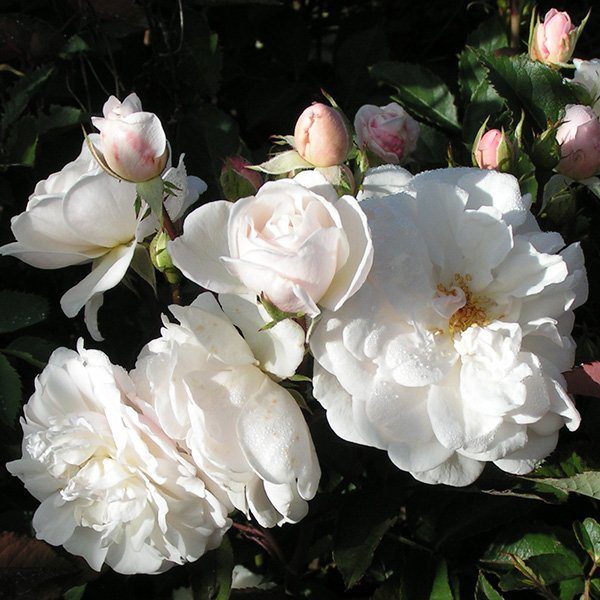
The Honey Perfume Floribunda
You like floribundas? I do. How about the one called Honey Perfume? Bees love it. You’ll get arguments about whether it’s peach or apricot and there is definitely yellow going on. It’s got a spicy fragrance. It blooms and reblooms. Unlike the Marie Pavie, this is a big rose, about three inches across.
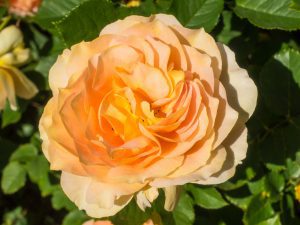
Lady Emmy Hamilton Roses
You can see that I’m attracted to these peach-orange-tangerine colored roses. Here is Lady Emmy Hamilton, which is deeply fragrant with a fruity scent. For what it’s worth, it’s a musk rose introduced by David Austin in 2005. So this is not an old-fashioned rose. But just look at it. I love the cupped shape, and the delicate coloration. If you are interested in ordering, hurry. It’s been selling out.
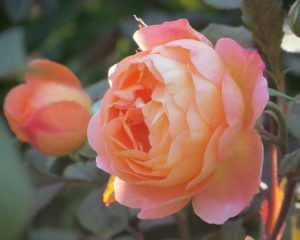
The New Dawn Climbing Rose
You want a climbing rose? How about New Dawn. It looks so unreal in photographs I hate to show it, but ok. This is New Dawn. It will climb 10 feet high. It is floriferous. It has a lovely soothing perfume. It’s a nice pink, a silvery pink, and not all pinks are nice. (See Knock Out Pink)
It was introduced in 1930 and in a 1997 international rose congress it was voted the most popular rose in the world. In. The. World. It will even grow in part shade. It will even grow in hardiness zone 4. Pretty much anyone can grow a New Dawn climbing rose. You don’t even need a trellis. It will climb a tree.
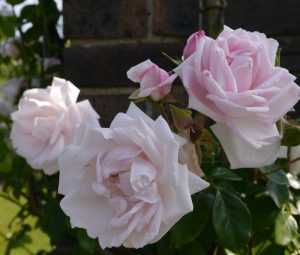
The Most Fragrant Madame Isaac Pereire Rose
And finally, for sensation seekers, what some people consider the most fragrant rose in the entire world. It is also what I consider the shar pei of the rose world, with folds and folds of petals: the Madame Isaac Pereire Bourbon Rose. This raspberry pink rose, which measures about four inches across, blooms from summer into the fall and has an intoxicating perfume. Imagine sinking your nose into those velvety folds.

Now, what makes more sense? Going to the local garden center and paying $24.95 for the instant gratification of hauling home a five-gallon bucket of gnarly, ready-to-bloom Knock Out rose? Or spending the same amount to order a bare root rose from a rose specialist, a rose that has some history behind it, that has earned respect for its beauty. And that will even let you get close enough to smell it.
